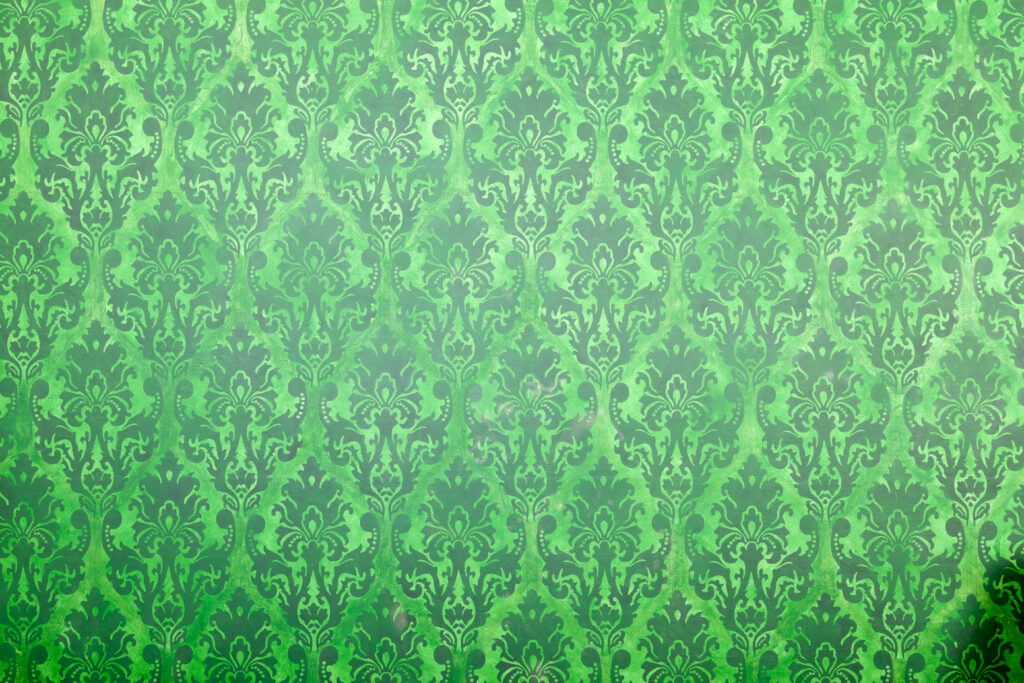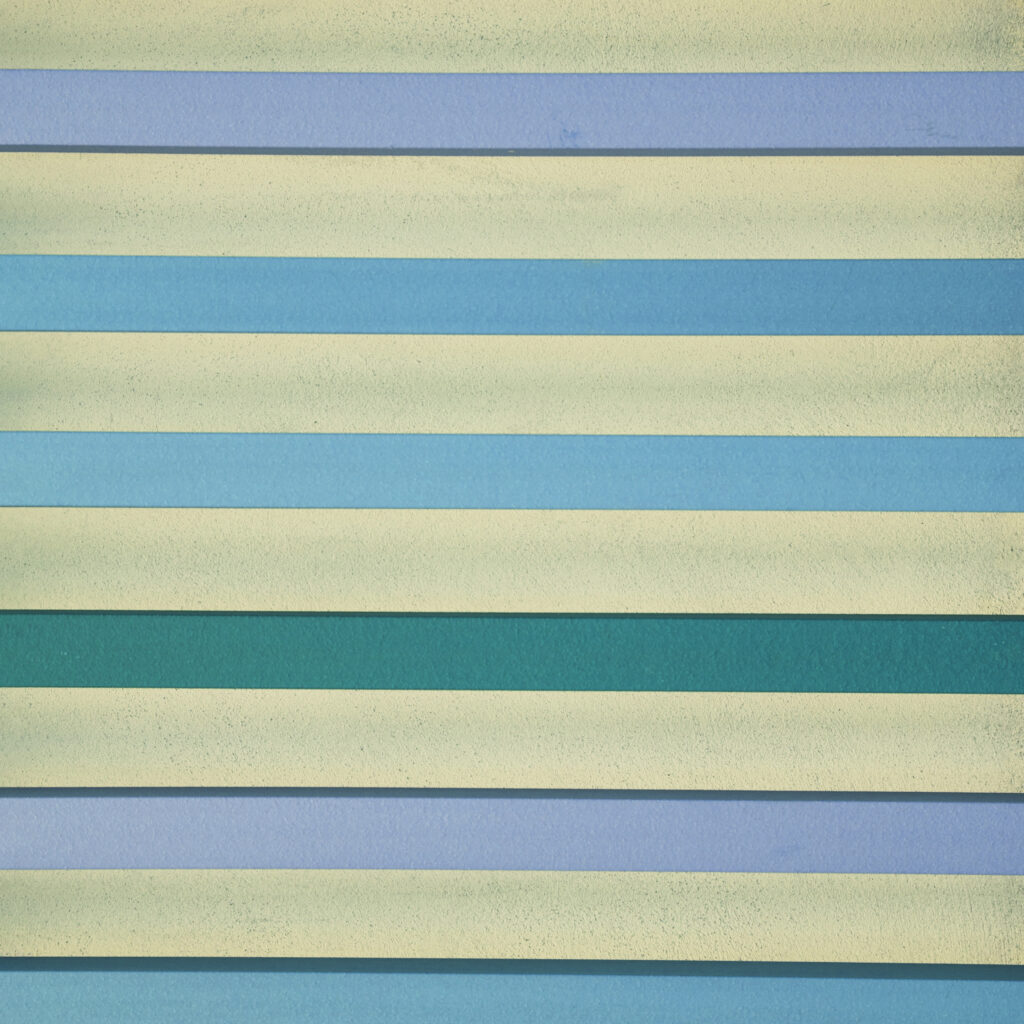Are you tired of dull walls and looking to add a touch of creativity to your home? Interior painting techniques offer a fantastic way to transform any room, creating eye-catching focal points and adding depth to your living spaces.
In this comprehensive guide, we’ll explore various creative painting ideas that go beyond a simple fresh coat of paint, including stripes, patterns, and textures that can suit every style and taste.
1. Striped Walls: Adding Dimension with Lines
Striped walls are a classic yet versatile technique that can dramatically change the look and feel of a room.
Whether you opt for vertical, horizontal, or diagonal stripes, this method can create a bold statement or a subtle and sophisticated backdrop.
Vertical Stripes:
Vertical stripes can make a room appear taller, making them perfect for spaces with low ceilings. To create vertical stripes:
- Start with a base coat of paint in your chosen color.
2. Use painter’s tape to mark out evenly spaced vertical lines.
3. Paint the exposed sections with a contrasting color.
4. Carefully remove the tape while the paint is still wet for crisp lines.
Horizontal Stripes:
Horizontal stripes can make a room feel wider and more spacious. The process is similar to vertical stripes but with the tape applied horizontally.
Pro tip: Use a laser level to ensure your stripes are perfectly straight for a polished look.
Diagonal Stripes:
For a more dynamic and modern look, consider diagonal stripes. These can add energy to a room and create an illusion of movement.
- Apply your base coat.
2. Use a protractor and pencil to mark your desired angle.
3. Apply painter’s tape along these lines.
4. Paint the exposed sections and remove the tape while wet.
2. Stenciling and Patterns: Creating Intricate Designs
Stenciling is a versatile technique that allows you to create intricate patterns on your walls without the need for wallpaper.
From geometric shapes to floral designs, the possibilities are endless.

How to stencil:
- Choose your stencil design and secure it to the wall with painter’s tape.
2. Use a roller or stencil brush to apply paint over the stencil.
3. Carefully remove the stencil while the paint is still wet.
4. Allow the paint to dry before applying a second coat if needed.
For larger patterns, consider using an adhesive stencil that can be repositioned multiple times.
Creative stencil ideas:
– Create an accent wall with a repeating pattern
– Stencil a border around the room
– Use metallic paint for a luxurious touch
– Layer different stencils for a complex design
3. Textured Finishes: Adding Depth and Character
Textured finishes can add depth and interest to your walls, creating a unique look that goes beyond flat paint. Here are some popular texturing techniques:
Sponge Painting:
Sponge painting is an easy way to add texture and create a mottled effect on your walls.
- Apply a base coat of paint and allow it to dry.
2. Dip a natural sea sponge into a contrasting color of paint.
3. Dab the sponge onto the wall surface, varying the pressure for different effects.
4. For more depth, use multiple colors or layer the sponging technique.
Rag Rolling:
Rag rolling creates a soft, fabric-like texture on your walls.
- Apply a base coat and let it dry.
2. Dip a rag into a glaze or thin layer of paint in a contrasting color.
3. Roll the rag down the wall, creating random patterns.
4. Experiment with different rag materials for varied effects.
Brush Techniques:
Various brush stroke techniques can create interesting textures:
– Dry brushing: Use a nearly dry brush to lightly drag paint across the surface.
– Stippling: Repeatedly dab the wall with the tip of the brush for a dotted texture.
– Cross-hatching: Apply intersecting brush strokes for a woven appearance.
4. Ombre Walls: Creating Gradient Effects
Ombre walls, featuring a gradual transition between two or more colors, can create a stunning visual effect in any room.
How to create an ombre wall:
- Choose your color palette, typically ranging from light to dark.
2. Apply the lightest color as your base coat.
3. Mix your colors in separate containers, creating gradual transitions.
4. Starting from the bottom, apply each color in horizontal sections, blending where they meet.
5. Use a dry brush or sponge to soften the transitions between colors.
Pro tip: For a subtle ombre effect, use different shades of the same color.
5. Metallic and Glitter Paints: Adding Sparkle and Shine
Metallic and glitter paints can add a touch of glamour and luxury to your interiors.
Metallic Paint Techniques:
– Use metallic paint for an entire wall to create a bold statement.
– Apply metallic paint over a textured surface for added depth.
– Create metallic accents or patterns on a solid color background.
Glitter Paint Ideas:
– Add a subtle sparkle to walls with fine glitter paint.
– Create a glitter accent wall for a touch of whimsy.
– Use glitter paint to highlight architectural features.
Remember to apply a clear topcoat over glitter paint for durability and easy cleaning.
6. Faux Painting Techniques: Mimicking Natural Materials
Faux painting techniques allow you to create the look of expensive materials like marble, wood, or leather on your walls.
Color Washing:
Color washing creates a soft, watercolor-like effect.
- Apply a base coat in a light color.
2. Mix a glaze with your chosen color.
3. Apply the glaze with a brush or rag, working in small sections.
4. Use a clean, damp cloth to soften and blend the glaze.
Faux Marble:
Create the look of luxurious marble with this technique:
- Apply a light base coat.
2. Use a feather or special marble tool to create veins with a darker color.
3. Soften the veins with a dry brush.
4. Apply a clear sealant for a polished look.
7. Combining Techniques for Unique Effects
Don’t be afraid to combine different painting techniques to create truly unique walls. Here are some ideas:
– Stencil over an ombre background for added dimension.
– Use metallic paint with textured techniques for a luxe effect.
– Combine stripes with sponging for a multi-layered look.
Tips for Successful Creative Painting
- Always start with a properly prepared surface. Clean, repair, and prime your walls before beginning any creative painting project.
- Test your chosen technique on a small, inconspicuous area or a sample board before committing to the entire wall.
- Use high-quality tools and paints for the best results. Good brushes, rollers, and painter’s tape can make a significant difference in the final outcome.
- Take your time and be patient. Many of these techniques require multiple steps and drying times between layers.
- Consider the overall design of your room. The painting technique should complement your furniture and decor, not overwhelm it.
- Don’t forget about lighting. Different lighting conditions can dramatically affect how your painted walls look, so test your colors and techniques under various light sources.
Conclusion
Creative interior painting techniques offer endless possibilities to transform your walls and add personality to your home.
Whether you prefer bold and vibrant colors or subtle and sophisticated hues, there’s a painting technique to suit every style and taste.
From simple stripes to complex faux finishes, these methods allow you to create unique focal points and add texture and depth to your living spaces.
Remember, painting is an art form, and perfection isn’t always necessary.
Embrace the uniqueness of hand-painted techniques and enjoy the process of bringing your creative vision to life.
With a little patience and practice, you can turn any dull wall into a stunning masterpiece that reflects your personal style and creativity.
So grab your paintbrush, roller, or sponge, and start exploring these exciting painting techniques today.
Your walls are a blank canvas waiting to be transformed into something truly extraordinary!
let us take care of it for you. Contact us today for a free consultation and learn how we can help preserve and enhance your Interior paint.

